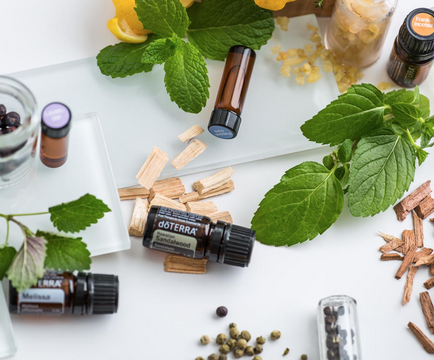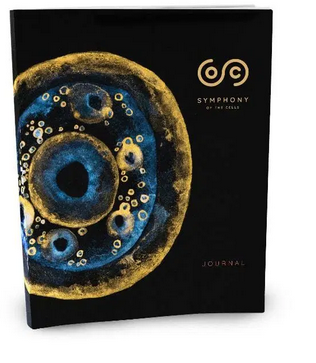“Plants mean nothing in isolation; they are a life-form rooted in and identified by their community, by their relationship to and interactions with all other life on Earth.” –Stephen Harrod Buhner, The Lost Language of Plants
Harrod Buhner, The Lost Language of Plants
It’s early morning and the tasks of the day call to me. I love what I do and can’t wait to get going. But I know I’m better as a mom, a partner, and a business owner if I take the time to sit, listen and breathe first. I reach for a small roller of an essential oil blend called “Balance.” Opening it delivers a quick surge of Black Spruce, Frankincense and Blue Tansy to my brain, dissolving the urgency of those tasks. I’m home in my heart again.
Then I roll a bit of that blend of forest and flowers on the arches of my feet; my eyes fall closed, exhalations deepen. Heart rises. My bones seem to settle and so does everything around me.
Use of high-quality essential oils as part of daily practices of physical and emotional support can mitigate our stressors and bring us toward a more robust and clear connection––to ourselves, our families and our communities.
Derived from different parts of the plants––leaves, petals, twigs, barks, heartwoods, grasses, rinds––essential oils can be used topically as well as aromatically to create profound connections emotionally, energetically and physically. Science shows that topical and aromatic use can reduce preoperative anxiety.
A recent study from the Erdogan University’s department of oral and maxillofacial surgery in Rize, Turkey concluded that, “Inhalation of lavender oil, which is one of the most powerful anxiolytic essential oils, reduces peri-operative anxiety and can be prospectively considered in future studies for its potential sedative characteristics in patients undergoing surgical procedures under local anaesthesia” (Karan NB. Physiol Behav. 2019).
Essential oils can also affect brain performance. David Kennedy and colleagues at the Brain, Performance, and Nutrition Research Center at Northumbria University in the UK showed that, “Peppermint (Mentha piperita) essential oil with high levels of menthol/menthone…beneficially modulated performance on demanding cognitive tasks and attenuated the increase in mental fatigue associated with extended cognitive task performance in healthy adults” (Kennedy D, et al. Nutrients. 2018).
Essential oils are either steam-distilled or mechanically cold-pressed from materials of plant origin. Plants hold compounds within their structures that help them survive and thrive in their environment––compounds to attract pollinating insects, repel other plant competition, deter harmful insects, or release antimicrobial, antifungal, and antibacterial agents that help the plants communicate with each other and/or protect one another.
So, it is no surprise that a recent literature review by Tariq and colleagues reported that many essential oils can destabilize the cellular architecture of bacterial pathogens, “leading to breakdown of membrane integrity, disrupting many cellular activities including energy production and membrane transport.”
They added that some oils have, “antiviral activities against many RNA and DNA viruses, such as type 1 and type 2 herpes simplex virus (HSV-1 and HSV-2), dengue virus type 2, influenza virus, adeno virus type 3, poliovirus, Junin virus, and coxsackievirus B1” (Tariq S, et al. Microb Pathog. 2019).
I have used essential oils personally and professionally for more than twenty years, and I have found that the most efficient system of application to deliver the potency of essential oils directly to the body is called Symphony of the Cells.
 Symphony of the Cells offers sequenced protocols of carefully selected essential oils and carrier oils to be delivered to the nerve endings along the spine and soles of the feet. The protocols are designed to support the body in returning to homeostasis, that elusive but palpable state of balance amongst the interdependent systems.
Symphony of the Cells offers sequenced protocols of carefully selected essential oils and carrier oils to be delivered to the nerve endings along the spine and soles of the feet. The protocols are designed to support the body in returning to homeostasis, that elusive but palpable state of balance amongst the interdependent systems.
How does this happen? The lipid-soluble molecules in the compounds of the plants easily interact with the lipid membranes of our cells, changing our biochemistry.
For example, chemical constituents known as sesquiterpenes, commonly found in essential oils such as Frankincense and Sandalwood, are able to traverse the blood-brain barrier (Moussaieff A, et al. Brain Res. 2012) and directly interact with neurotransmitter receptors, which has far-reaching implications for so many who experience stress, overwhelm, and other chronic issues.
Symphony of the Cells was devised by Boyd Truman, founder of the Life Essential Wellness Center in St. George, UT. Truman has been using essential oils—especially the spinal application of the oils––for 27 years, and now teaches the Symphony system worldwide.
Though Truman himself is a distributor of the doTERRA essential oil products, the Symphony of the Cells protocols are brand-agnostic, so to speak. Any line of products can be used, provided they are pure and of the highest quality.
What makes this topical application system of oils unique?
One aspect of it is interpersonal connection. Though one can follow the protocols by oneself, they are ideally designed to be applied by partners, family members, or close friends. They foster consistent human contact with each other.
I’ve found that the protocols give my family and me a means to care for one another in the simplest healing ways. It is soothing to the nervous system and supportive at the cellular level, both for the person applying the oils and the one receiving.
In a world that is increasingly defined by virtual connectivity, it is vital to consider the importance of human touch; it lends us a tangible sense of belonging and safety. Practices of healing touch enhanced with topical application of essential oils give us a quantifiable boost, both in mood and in immune support. And touch leads us to talk more, listen well, and work more closely together on what matters in our home.
I’ve witnessed the emotional transformations that can happen from consistent aromatic and topical use of both of those oils: people begin to trust more, they become more dedicated to their own emotional healing, they reach out for guidance rather than stay closed off and isolated.
The oils also bring us closer to the plant world, especially the trees––those beacons of majestic slow growth and possibility––and this wakes up our potential for healing in all its forms. This is especially important for those of us who live in cities.
END
 Elena Brower has taught yoga and meditation since 1999. Her first book, Art of Attention, was widely praised throughout the yoga world. It has been translated into seven languages and forms the basis of an online audio meditation course of the same name. Her second book, Practice You: A Journal, is now a bestseller from Sounds True. Her third, Being You: A Journal for Teens, will be released in 2020. Elena’s Elevate Mentorship Program is beloved for adding analog creativity to online coursework, and her upcoming Simplify to Amplify course for independent entrepreneurs will launch in 2020. She is respected globally for her distinct blend of alignment and attention in her teaching of yoga and meditation. Her personal and professional practice includes aromatherapy and topical use of essential oils, and she is a Double Diamond leader with doTerra. Discover more about Elena’s work at www.elenabrower.com.
Elena Brower has taught yoga and meditation since 1999. Her first book, Art of Attention, was widely praised throughout the yoga world. It has been translated into seven languages and forms the basis of an online audio meditation course of the same name. Her second book, Practice You: A Journal, is now a bestseller from Sounds True. Her third, Being You: A Journal for Teens, will be released in 2020. Elena’s Elevate Mentorship Program is beloved for adding analog creativity to online coursework, and her upcoming Simplify to Amplify course for independent entrepreneurs will launch in 2020. She is respected globally for her distinct blend of alignment and attention in her teaching of yoga and meditation. Her personal and professional practice includes aromatherapy and topical use of essential oils, and she is a Double Diamond leader with doTerra. Discover more about Elena’s work at www.elenabrower.com.







